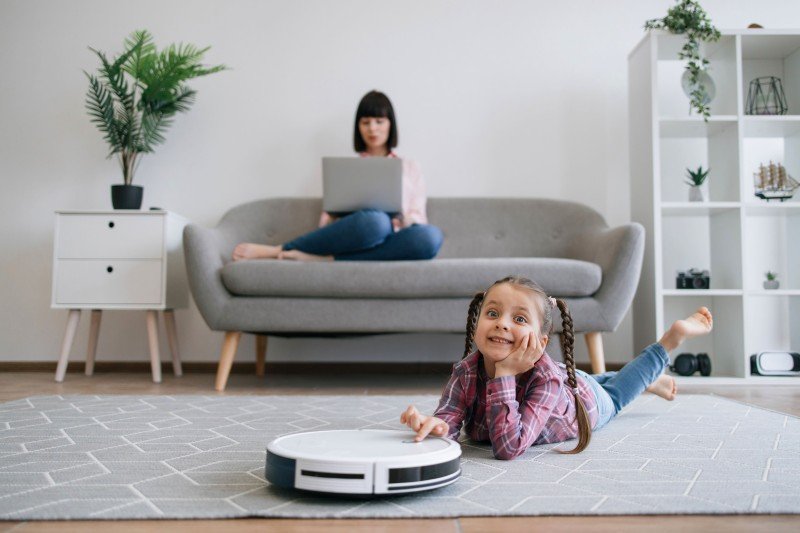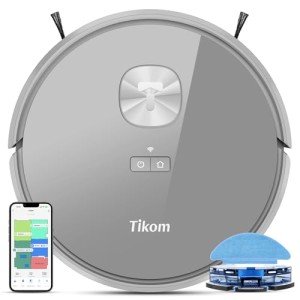인사말
건강한 삶과 행복,환한 웃음으로 좋은벗이 되겠습니다

룸갤러리
See What Automatic Vacuum Cleaner Tricks The Celebs Are Using
페이지 정보
작성자 Domingo 작성일25-02-21 19:26 조회6회 댓글0건본문
 How to Choose an Automatic Vacuum Cleaner
How to Choose an Automatic Vacuum CleanerMany robotic vacuum cleaners are equipped with advanced technology for smart mapping and sensors. These features allow them to navigate through homes and reach difficult corners. They're also beneficial for those with allergies, as they limit contact with dust and pet hair.
The Eufy X10 is a top pick. It is fitted with the most effective object avoidance technology available in its class, which is specially trained to stay clear of coffee bags, socks, and other items. It is able to clean underneath the ottomans that are low.
Self-charging
Self-charging robot vacuums are a good option for homes with several floors or larger homes. Its large dust bin and long-lasting battery let it clean larger areas without needing to return to the base. It also comes with a one-touch ejection button to easily empty its contents into a trash container. Many robotic floor scrubber vacuums come equipped with HEPA filters that effectively trap dust particles and allergens, resulting in a healthier living space.
A robot vacuum is a small, powerful machine that uses sensors to assess the environment. It then combines side brushes, roller brushes and mops in order to clean floors thoroughly. After the cleaning cycle it returns to the docking station to recharge and prepare for its next session. Unlike manual vacuums, robovacs do not get bogged down or get distracted by food crumbs or pet hair. They are also quieter than traditional vacuums, which makes them a great option for smaller homes and apartments.
Many of the most well-known robot vacuums available have advanced navigation tools that help them navigate your home. They make use of lasers, sensors and cameras to make maps of your home and detect obstacles in its path. These technologies allow the robot to change directions or choose an efficient route. They can detect steep slopes to prevent the robot from falling down the stairs. Many of these devices can even be controlled via an app for smartphones to set schedules and customize your cleaning settings.
Automatic vacuums can also be programmed to run when you're not there. This feature makes them ideal for busy individuals or who are unable to hire a professional housekeeper. Many users of robot vacuums have discovered that their devices save time and energy, as well as making their homes more relaxing.
Some robot vacuums have a hard time with large debris and may not be able to pick up pet hair or other fine dirt embedded in carpet fibers. They can also have trouble with dark floors, and can be unable to move or Automatic Vacuum Cleaner stop under low furniture or thresholds for doors. You can set up virtual barriers and no-go zones in order to avoid these problems. You can also program your robot to run at specific times and integrate it with other smart home systems.
Wi-Fi connectivity
Many smart vacuum cleaners operate well without Wi-Fi. However connecting your robot to internet unlocks advanced features that improve efficiency and convenience. Some of these features include precise home mapping, customizing cleaning preferences and remote control using mobile apps. Some even allow you to give your robot a funny name. In addition, the app can also send regular firmware updates to the vacuum cleaner.
Connecting a robot vacuum WiFi is simple, but it is important to follow the manufacturer's instructions and also check the settings of your router. The majority of modern vacuum cleaners utilize 2.4GHz signals. These have a wider coverage area and are more reliable than 5GHz connections. Dual-band routers are able to transmit both 5GHz and 2.4GHz signals. If you own a dual-band wireless router, make sure to select 2.4GHz on your smartphone when setting it up.
The application for your robot is usually simple to use and allows you to start or stop cleaning sessions. Certain models are also compatible with Amazon Alexa or Google Assistant. This allows you to activate the robot with voice commands. This feature is particularly helpful for pets and busy families as it frees your hands and allows you to focus on other tasks while the vacuum is doing its work.
You can also customize the app by setting up no-go zones or adjusting cleaning modes. Certain apps generate heat maps that help you determine the dirtiest areas in your home and adjust the suction of the robot accordingly. You can also alter the cleaning schedule or preferences for each individual room. Certain models allow you to pause and restart cleaning sessions.
A strong connection to internet is crucial to your robot vacuum's navigation system, so make sure to check that it has a good signal from Wi-Fi and doesn't have any connectivity issues. If the vacuum is experiencing difficulty connecting to the Internet try moving it closer to your router or using an extender for Wi-Fi to boost the strength of your signal. If the issue continues, it could be time to call the customer support team of your router.
Navigation system
A robotic vacuum's navigation system is crucial to its ability to avoid obstacles and thoroughly clean. There are many different types of navigation systems, from simple bump sensors to advanced mapping technology. The best combo vacuum navigation system will make your robot cleaner and more efficient.
The navigation of most basic robot vacuums is built on a combination of sensors and algorithms. They utilize bump sensors to detect solids and infrared sensors to identify hot or cold objects. This lets the robot avoid furniture and other heavy, large objects. Sensors also help the robot to determine its position in space, which is necessary for precise navigation.
Advanced robot vacuums employ cameras to improve navigation accuracy. Cameras utilize sensors and lens to record images, which are then analyzed to determine their location. The robot also uses the information in the images to detect obstructions and create a map to plan its route. In addition the camera can detect things like doors and windows and avoid them.
Some of the most advanced robotic vacuums use LIDAR to scan the room and create 3D maps. This technology is similar in many ways to the self-driving vehicle system. LIDAR unlike other kinds of sensors is less affected by changes in lighting conditions. This is why it is ideal in rooms with a broad variety of lighting conditions.
ECOVACS DEEBOTs incorporate this advanced technology in the most recent models. Their mapping capabilities, when combined with dToF laser-based navigation, give an even more precise map of your home than conventional sensors. The robot can identify obstacles in real-time and determine the most efficient cleaning route automatically. It also eliminates the need for manual intervention and ensures complete cleaning.
While a vacuum cleaner with a basic navigation system will eventually get rid of your home however, it takes a long time and may not be able to find certain areas. A more sophisticated navigation system will make fewer mistakes and will be more efficient. A robotic vacuum equipped with an integrated mapping system will not only detect obstacles, but will also keep track of its movements and retain the specifics of its cleaning. This will allow the robot to return to a particular area without having to restart its journey.
Battery life
The battery life of robot vacuum cleaners is essential to its efficiency. The battery life of the robot vacuum cleaner is contingent on the frequency it is used, how long it can run and charge and the type of debris it collects. A quality robot will return to its dock and charge whenever needed. You can prolong the lifespan of a robot's battery by regularly cleaning the brushes and getting rid of hair from the suction system. Cleaning the device can also lower its energy consumption.
Most robots utilize lithium-ion batteries, which offer an excellent power density and long cycle life. However, older models utilized nickel-metal hydride batteries that have shorter battery lives and require longer recharge times. If your robot is using an hydride nickel-based battery, switch to a lithium-ion model to experience better performance.
You should consider the possibility of storing your robot in a dry and cool area, and clean the area of liquid hazards, such as spills or water bottles that have been opened. Liquids can damage electronic components that can affect battery performance, could lead to premature failure.
A well-maintained robotic system can last for up to four years, depending on the brand and model. Regular maintenance involves clearing the wheels of dirt, checking for sharp objects and blockages, and regularly washing mop heads. Additionally you should clean the dust bin of your vacuum and empty it after each use. You should also check the battery for signs of wear and wear and tear.
When purchasing a robot, you must consider cleaning performance as well as the navigational and mapping capabilities and obstacle avoidance features. These features ensure the robot moves in the right direction and avoids collisions with furniture, pets, or other obstacles. A good robot will be able to change its cleaning mode according to the floor kind, whether it's carpet with stained floors or hardwood floors that are unfinished.
If your robot vacuum robot cleaner has an automatic bin, make sure to empty it as soon as it is full. This will prevent it from overflowing. Also, you should look for obstructions and other debris, as these could cause the vacuum to lose suction. You can map out your room and create no-go zones through the app if you have a smart model. Its advanced sensors allow it to go up and down doors and prevent it from falling off stairs or ledges.

댓글목록
등록된 댓글이 없습니다.